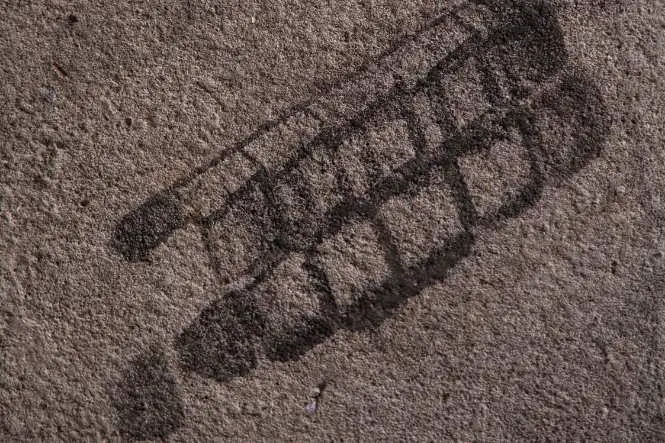There are many different types of evidence that can be catalogued and used in the pursuit of criminals. As well as fingerprints and physical evidence such as bodily fluids and definitive eyewitness testimony; there are such things as bloodstains, tyre tracks and soil samples that can also be used.
Bloodstains are not always those of the victim and can sometimes be attributed to blood spilled by the perpetrator of a violent crime if the victim defends themselves. Defensive wounds can not only be found on the victim but also on the hands and face of the perpetrator upon arrest.
Tyre tracks are also important as they reveal a lot about the vehicle used, especially in cases such as hit and run or other road traffic offences. The tracks of tyres are almost as individual as fingerprints and once identified can go as far as determining the make, the model and even the age of the vehicle. Also tyres can hold vital clues as to where the vehicle has previously been as there can be sand, glass, soil, grass and other materials in between the treads.
Soil samples are also important; these samples can determine where a suspect or victim has been prior to being found at a crime scene.
Gathering Evidence
At a crime scene a Scenes of Crime Officer (SOCO) will not only be in charge of photographing the scene but will also be responsible for the production of plaster cast mouldings of tyre tracks (as well as photographing them), the collection of soil samples to match against samples found on the footwear, clothing or under the fingernails of the deceased, and also to take samples and photographs of bloodstains.
Bloodstains offer valuable clues as to what happened to the victim. So-called blood spatter patterns can be isolated to a specific spot, which may indicate post mortem wounding or can be spread over a large area, which can indicate high blood pressure upon the inflicting of a wound.
Footprints are also photographed and measured and can require a plaster cast mould to be made. The size of a footprint can go some way to identifying sex, height and weight depending on the depth of the impression. These cast mouldings are made by segregating the print or indentation using a small frame and pouring a mixture of plaster of Paris or dental cement into the frame.
It is worth noting that if footprints or tyre tracks are found in areas where high levels of water are to be found then these prints or tracks can be distorted. It is necessary to remove the levels of water before photographing or making casts.
These three techniques are very useful and important in the collating of evidence at a crime scene. They have very different means of being carried out and also have very different results but ultimately all are useful in the process of identifying the perpetrator of a crime. In addition the information collected at these crime scenes can be used for the purposes of training future generations of police and scenes of crime officers.

